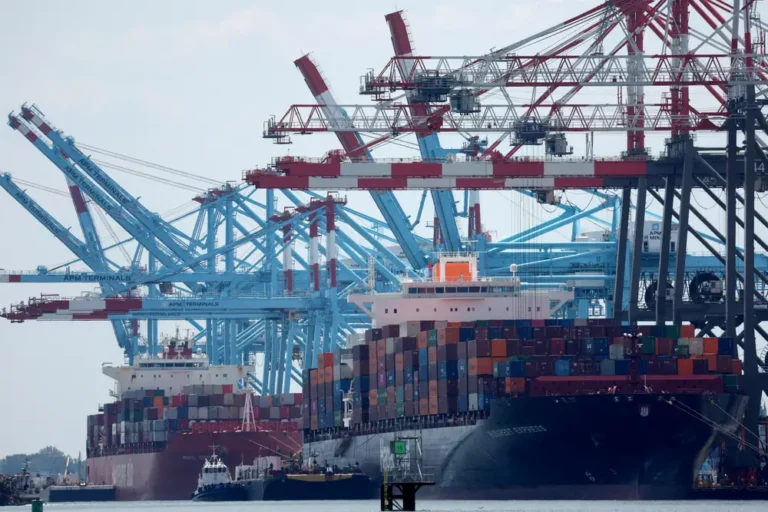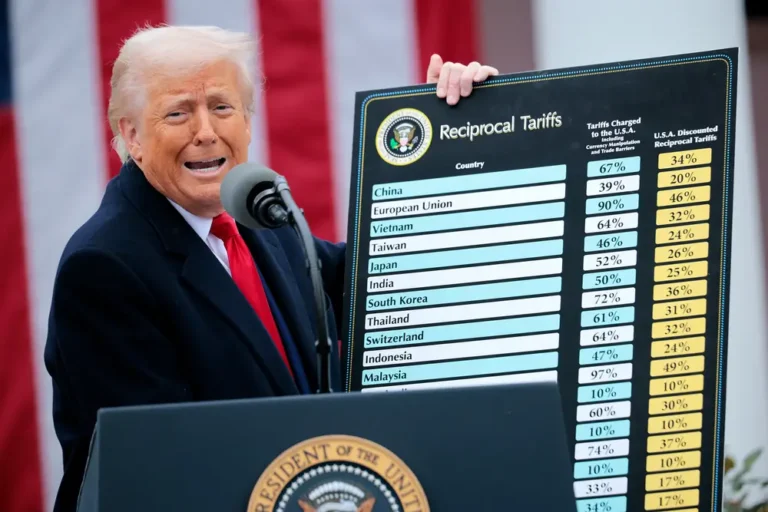South Korea is going big on American manufacturing. The Battery Belt could benefit the most.

South Korean companies are investing billions of dollars in the US to take advantage of two big laws meant to boost American manufacturing.
According to a Financial Times analysis of United Nations data, South Korean companies invested $21.5 billion in US projects in 2023, more than any other country. South Korea overtook Taiwan, which held the top spot in 2022.
Samsung, LG, and Hyundai are among the South Korean companies committing billions of dollars to build facilities in the US to manufacture electric vehicles, batteries, and semiconductor chips. Much of the money is flowing to southern states, boosting jobs in the so-called Battery Belt.
Yeo Han-koo, former trade minister of the Republic of Korea and a senior fellow at the Peterson Institute of International Economics, told B-17 that US and South Korean interests in emerging technologies are perfectly aligned.
Amid geopolitical uncertainty, the Biden administration is aiming to decouple US supply chains from China to compete in the EV and chips race. Meanwhile, South Korea — a longtime US ally — aims to build its global profile in high-tech and auto manufacturing.
In particular, Yeo said, the 2022 Inflation Reduction Act and CHIPS and Science Act provide financial incentives for companies to invest in green technology in the US, bolstering South Korean commitments.
“In addition to these new geopolitical factors, these massive subsidies and tax incentives from the IRA and the CHIPS and Science Act really provide a good motivation for these Korean companies to invest in the US,” Yeo said.
South Korean companies are creating green tech jobs in the US
According to the Financial Times analysis, over half of South Korea’s outbound investments went to the US in 2023, up from 18% in 2019. During that same time, South Korean outbound investment in China decreased from 11% to 1%.
Over a third of Korean project announcements in the US in 2023 were in the automotive or electronics sectors, including a Kia plant in Georgia set to take advantage of the IRA’s $7,500 tax credit for buyers of US-made EVs.
Similarly, in February, Hyundai announced over $7 billion in investment in production facilities in Georgia. The company estimates their investments will create nearly 40,000 jobs in the state.
And South Korean investments span across multiple states, mainly in the South. Samsung invested $17 billion in a semiconductor plant in Texas that is expected to create thousands of jobs. LG recently invested $5.5 billion in building a battery plant in Arizona.
Additionally, SK Hynix, Inc. announced a $3.87 billion plant in Indiana to produce chips for AI products. The plant is expected to create nearly 1,000 jobs by 2030.
Yeo said South Korea has an interest in becoming a competing player in emerging technologies, and the US needs allies to bolster its manufacturing.
“Reviving US manufacturing will be one of the most important economic policy objectives, but I mean, the US cannot do it alone,” Yeo said. “The US needs a kind of partner in rebuilding this manufacturing, especially in these emerging new industries and supply chains.”
In the past decade, South Korean companies have created about 7,000 jobs in Texas and nearly 8,000 jobs in Indiana.
As the US reenergizes its manufacturing industries, Biden’s inflation-fighting laws include provisions excluding businesses with supply chains connected with “foreign entities of concern,” like China, Yeo said, to guarantee competition.
“Once you get the US subsidies, you are limited in terms of your flexibility to invest in China,” Yeo said.
Those provisions have incentivized South Korean companies to divert from China and focus more on the US.
In May, South Korea’s Ministry of Trade, Industry and Energy announced it committed $7 billion toward moving its supply chains away from China to further comply with US rules, according to The Wall Street Journal.
Furthermore, as high-tech products like EV batteries become a primary focus for US manufacturing, it makes business sense for South Korean companies to invest in plants directly in the US, Yeo said.
“These batteries, for example, are very bulky products,” Yeo said, referring to EV batteries, which he said are cumbersome to ship. “So I think in the case of the battery industry, I think it also makes commercial sense to locate those factories close to the final market or end users.”
South Korean companies like LG and Samsung are designed to be global, Yeo said, and the US is often a target destination for large corporations.
According to World Bank data, the US population is above 330 million, while South Korea’s population is just above 50 million.
“The US is the biggest market right now, and also still, the US market is considered to be very sophisticated,” Yeo said. “When these global companies roll out new products, new technologies, they need to test it in the US market.”
To be sure, Yeo said it’s important to recognize that trade is a complicated picture. China has been and continues to be one of South Korea’s largest trading partners. While this moment provides business opportunities for South Korean companies in the US, the looming geopolitical tension with China creates uncertainty.
“With this geopolitical tension arising between the US and China, a lot of Korean businesses who had invested in China and had big kind of China operation are really kind of being squeezed between the US and China,” he said.
South Korean companies are committing to the US right now, but Yeo said political uncertainty over the presidential election encourages caution for international business.
“Korean companies have a first-mover advantage at the moment, but now also they are facing potential risk, depending on the outcome of the November election in the US,” Yeo said.
Nonetheless, Yeo said these investments would likely not make business sense without the subsidies and incentives provided by the Biden Administration’s focus on manufacturing.
“Because of this combination of all these factors you see right now,” he said, “Korean investments are really flooding into the US market.”






